Sneak Peek at the EOC
County's New Emergency Operations Center a Beast of a Building
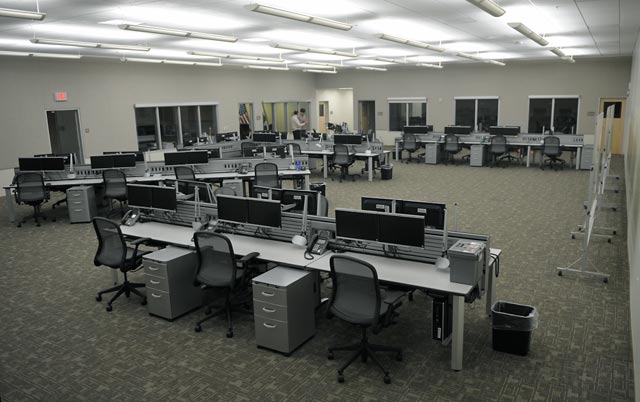
The building itself is rather nondescript.
But in and around Santa Barbara County’s brand spanking new Emergency Operations Center (EOC) is a carefully laid out communications super-hub, built to withstand fire and earthquakes and serve as the county’s headquarters come the next tragedy or disaster to befall the region.
A day after the Board of Supervisors took a tour of the new building, located on the county’s Cathedral Oaks campus — also home to the fire department — The Independent got its own sneak peek last week at the new state-of-the-art palace filled with top quality features, all at a bargain rate to taxpayers.
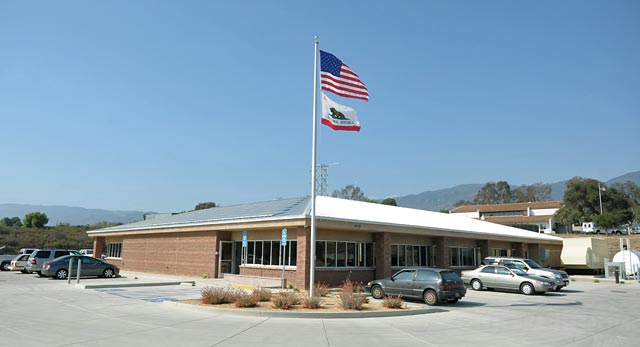
On the exterior, 24/7 video surveillance and metal fencing protect the facility from unwanted visitors, while sprinklers on the building’s overhang combined with cleared brush and light vegetation will keep a fire from getting too close. “We tell people about defensible space,” said Emergency Operations chief Michael Harris. “Let’s use it here.”
On the roof sit 166 solar panels generating power to help keep energy costs down, and three satellite systems sit on a tower above. The parking areas are made of pervious concrete that lets water drain back into the ground, and the landscaping is drought tolerant and uses low-water plantings.
The facility has a 550 kilowatt generator with a diesel tank which has a four-day run time. There’s room on one side of the property for a helicopter to land inside the fencing, and room on the other side to expand should the county one day find the need.
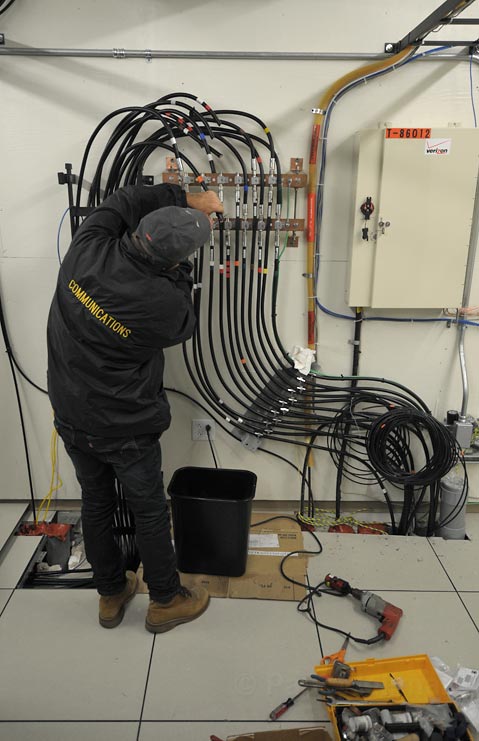
The building is awe-inspiring, especially in comparison to the county’s former EOC headquarters — a series of four trailers where staff were packed like sardines during emergencies. The new facility is 11,000 square feet and will be the hub for the county’s policy and management oversight in serious emergencies. “We’re about taking information from a wide variety of sources and managing it,” Harris said. When there is no emergency, the building is home to seven EOC staff members who formerly worked in the basement of the county’s downtown administration building.
Heading inside, the sunlight coming in from windows lining the tops of hallways makes the need for light fixtures pointless. While the walls — fixed with paintings of local fires and landscapes — look like normal walls, they have large steel plates inside them, built into the concrete foundation and making the entire building very strong.
By far the most impressive part of the building — a room that will spring to life during the next emergency — is a computer-filled incident management room in the middle of the building.
While the previous incident management room was 1,200 square feet and took several hours to boot up — staff would have to get computers and phones out of storage and then wait for computers to update themselves — staff will now have use of a 3,100-square-foot incident management room, which can be up and running quickly after an emergency. The room, outfitted with dozens of computers purchased by Homeland Security, has a system backed up in two places, with one server isolated so the center can stand alone even if communications are cut off from the outside world.
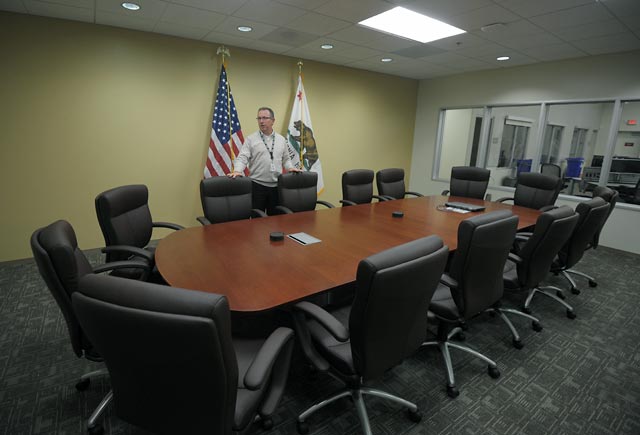
The room is divided into functional areas — management, finance and administration, logistics, planning, and operations — and all doors to the room can be locked from the inside. Phones have log-in numbers while filing cabinets are on wheels so officials can move from computer station to computer station with ease. The county is currently out-to-bid on an audio visual system that will plug in to all the stations in the room, and allow different staff members to project information onto the wall so everyone can see what they deem important. Picture a less glamorous NASA mission control center, and that’s the incident management room.
Off to the side of the incident management room are several offices and conference rooms, including a public information office, executive briefing room, and other conference centers. The briefing rooms are equipped with video conferencing and integrated with all city EOCs so officials can be in touch. They can also accommodate federal or state partners, and have hook-ups to conference with them as well. The systems will also eventually be able to hook up with an infrared camera on one of the Sheriff Department’s helicopters to give officials a real time appreciation of what sort of emergencies the county may be facing, and where.
There’s also an enhanced computer room filled with protective measures to keep the servers intact: two large air conditioning units to keep the computers cool, an alarm in case of failure, and sensors on the floor to detect water. Racks and racks of batteries are in place to protect the system in case of power outages. “If we’re completely isolated we could still talk to anyone in the world,” said Harris, who has been emergency operations chief at the county for four years.
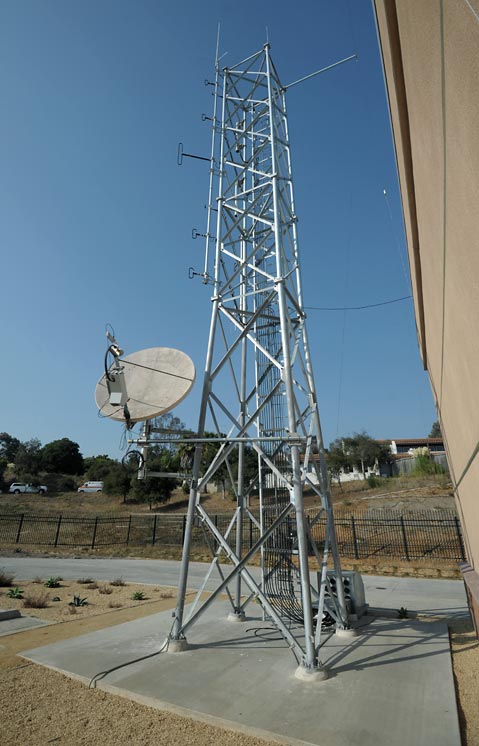
The staff moved in about two months ago, while the actual Emergency Operations Center moved about three weeks ago. In addition to using the facility as EOC staff workspace, the building has been made available for meetings among government agencies. Earlier on the same day of The Independent‘s trip, area fire chiefs held a meeting in the building.
Every county in California has an EOC, ranging from new buildings like Santa Barbara’s to small, cramped rooms or trailers. But, Harris said, officials in every county they visited said they built their EOCs too small. So S.B. county took property it already owned, and former county CEO Mike Brown started stashing away money to pay for a new facility.
The project cost the county $5.6 million, while more than $2 million came from grants and initiatives, in large part from the Aware and Prepare Initiative of the Orfalea Fund. Add in emergency management software provided by Homeland Security, and the total amount of money that when into building and outfitting the new EOC added up to about $9 million.
“I thought it was great,” said 2nd District Supervisor Janet Wolf, who was a strong supporter of the project, after touring the grounds. “The community should be proud that we saw this was a priority and that we moved forward.”



